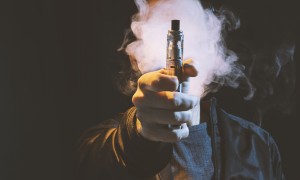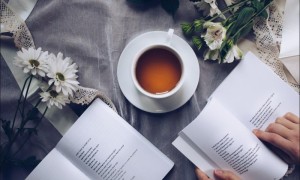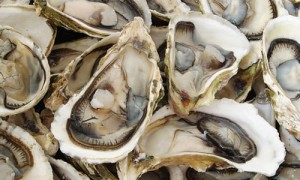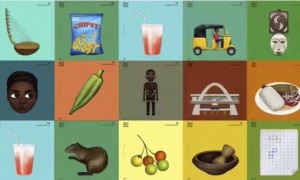最近 Cindy 的英国朋友 Kate 来到台湾旅游,Cindy 决定带她去台湾最有名的阿里山走走…
Cindy: I’m so glad you finally made it to Taiwan!
Cindy: 我好开心你来台湾玩!
Kate: Me too. I’ve always wanted to try Taiwan’s world-famous oolong tea. I’ve heard it has been called “the champagne of oolong tea.”
Kate: 我也是,我一直很想喝台湾有名的乌龙茶。听说它一直被称作「香槟乌龙茶」。
Cindy: It has indeed. Did you know that Alishan’s success at producing this type of tea was kinda by accident?
Cindy: 没错。你知道阿里山之所以会产这种茶也是意外促成的吗?
Kate: No, how so?
Kate: 不知道耶,怎么说?
Cindy: In the 1980s, with the help of government experts, locals were encouraged to start growing tea to boost the economy. It turned out that Alishan’s high altitude and cool climate produced near-perfect oolong.
Cindy: 1980年代的时候,经由政府专家的协助,当地人被鼓励种茶刺激经济。后来发现阿里山的高海拔和凉爽环境能产出接近完美的乌龙茶。
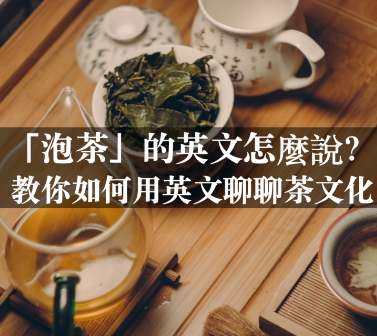
Kate: Awesome! I can’t wait to taste it.
Kate: 太棒了!我等不及了。
Cindy: I’ve made a reservation at a tea house high up in the mountains—1,000 meters up! It will take us a while to get there, so let’s get going.
Cindy: 我已经预约好高山上的茶馆,一千公尺高的山上!到那会需要一点时间,所以我们出发吧。
(At the tea house)
(在茶馆)
Clerk: Welcome. Before we start brewing some tea, I would like to give you a bit of an introduction to Taiwanese tea culture.
店员: 欢迎光临。在我们开始泡茶之前,我想要先跟你们介绍一下台湾的茶文化。
Kate: Yes, please.
Kate: 麻烦了。
Clerk: Tea culture in Taiwan began with aborigines brewing wild tea leaves. Later on, immigrants from Fujian brought with them wuyi and oolong teas. In the 1930s, the Japanese encouraged people to start growing black teas for export—many of which are still available and highly-prized today.
店员: 台湾的茶文化始于原住民在野外种茶叶。后来福建省迁入的移民带来武夷岩茶和乌龙茶。 1930 年代,日本人鼓励鼓励民众种植红茶出口,直至今日许多茶种还是相当有价值。
(to be continued)
(未完待续)
oolong tea (n.) 乌龙茶
如果你是喝茶的狂热者,那一定不会不知道乌龙茶!乌龙茶可说是台湾的骄傲,如果有机会向外国人介绍的话,乌龙茶的英文就是 oolong tea,是直接音译过来的。其他茶种如:green tea (绿茶)、black tea (红茶)、Earl Grey (伯爵茶)、English breakfast tea (英式早餐茶)、Masala tea (印度香料茶)、
Oolong tea from Alishan is known for its floral flavors and long, sweet aftertaste.
阿里山的乌龙茶有名的是它的花香味和持久香甜的余味。
tea house (n.) 茶馆
喜欢喝茶的你除了到手摇店买茶类饮料之外,若想要深入体会泡茶的过程就可以去茶馆,茶馆的英文很简单,称作 tea house。
My dad is a bit of a tea connoisseur. He likes to spend his Sundays sampling different teas at the tea house near where we live.
我爸爸很会品茶。他礼拜日喜欢去家里附近的茶馆品尝各种茶。
brew (v.) 泡 (茶)
brew 这个字在对话中是当动词,意思很多,泡茶、酿啤酒、煮咖啡的动词都可以用这个字。另外这个字也常在英式用语中当作「啤酒」的口语称呼。
I don’t really like coffee. I usually brew myself a cup of tea in the morning.
我不太喝咖啡,我通常每上都泡茶。
听茶馆店员讲解一番后,现在他们正式要来试试看泡一壶好茶了…
Clerk: Before we begin, take a deep breath and relax your minds.
店员: 在我们开始钱,先深呼吸放松一下。
(Kate and Cindy take a deep breath)
(Kate 和 Cindy 深吸一口气)
Clerk: First, we’ll measure out our tea leaves using a tea spoon. We then add the leaves to the teapot along with some hot water to wash them.
店员: 首先,我们要用茶则量一下茶叶量。接着把茶叶加入茶壶中,连同热水,然后冲洗一下。
Kate: Okay.
Kate: 好的。
Clerk: Then, we pour out the water, before refilling the pot and letting the leaves steep. The tea is at its most aromatic after the first steeping, which takes around 3 minutes.
店员: 接着,把热水倒出来,接着再倒入热水然后让茶叶沉浸一下。第一泡的茶通常味道最香,通常需要泡三分钟。
(Three minutes later)
(三分钟后)
Cindy: Wow, it’s true. You can really taste the floral flavors.
Cindy: 哇,真的耶。真的可以尝到花香味。
Clerk: The second steeping takes around 30 seconds. The tea should now have a slightly different taste.
店员: 第二泡要等三十秒,现在这泡应该喝起来会不太一样。
Kate: Mmm! It’s got a sweet aftertaste. I think I like the second steeping better.
Kate: 恩!会回甘。我比较喜欢第二泡。
Clerk: If you enjoyed that, you can buy a tea set and some tea from our shop so you can try it at home.
店员: 如果你喜欢,可以买个泡茶器具组和我们店内的一些茶回家试试看。
Cindy: Thank you!
Cindy: 谢谢!
tea spoon (n.) 茶则
泡茶的步骤有很多,其中很特别的是我们会将茶叶先放到茶则量茶叶量,而不是直接把茶叶放进茶壶喔!而「茶则」的英文就是 tea spoon,注意这边要分开成两个字,若合并成一个字 teaspoon 则变成喝茶或咖啡时用来搅拌的小茶匙。
Before making tea, you should measure out the tea leaves using a tea spoon.
在泡茶之前,你应该用茶则测量茶叶量。
teapot (n.) 壶
泡茶最不可或缺的器具就是茶壶啦! 「茶壶」的英文是 teapot,其中 pot 是名词,表示「壶;罐」的意思。
The type of material used to make a teapot can influence the flavor of the tea.
茶壶的材质不同可能会影响茶的风味。
steep (v.) 浸泡
茶叶的冲泡分成很多次,我们中文称作茶叶的第一、二、三泡,那在英文中第一「泡」应该怎么说呢?我们可以用 steep 这个字,steep 在这边是当动词,表示「浸泡」的意思。
How long you steep coffee or tea for has a big influence on its flavor.
咖啡或茶叶浸泡多久会影响它的味道。
aromatic/floral/sweet (adj.) 香的/有花香味的/甜的
喝完茶之后,我们可以用哪些英文形容词形容茶的味道呢?今天小 V 就来教你三个形容词分别是 aromatic/favorable/sweet,意思分别是香的/浓的/甜的,若要表达会回甘,可以用 have a sweet aftertaste,aftertatse 为名词,意思是「余味」。
This tea has a sweet aftertaste, with hints of strawberries. The other is very aromatic with floral flavors.
这杯茶喝起来会回甘,还带点草莓味。而另一杯喝起来则是花香味十足。



